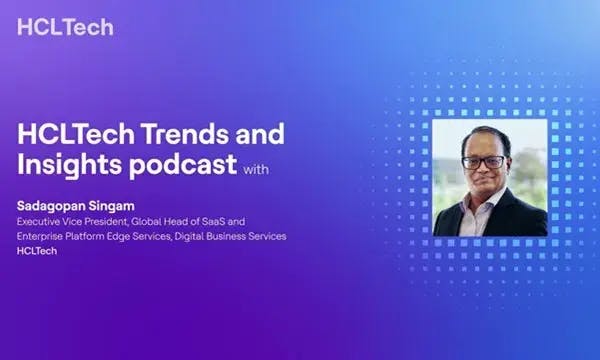Video
Section CTA
From projects to products: Reinventing IT models in life sciences and healthcare
Shrikanth Shetty, Chief Growth Officer and Global Head, Life Sciences and Healthcare at HCLTech, shares how shifting to a product-centric IT model is accelerating agility and AI adoption in healthcare

Playing now
From projects to products: Reinventing IT models in life sciences and healthcare
Shrikanth Shetty, Chief Growth Officer and Global Head, Life Sciences and Healthcare at HCLTech, shares how shifting to a product-centric IT model is accelerating agility and AI adoption in healthcare

Prabhakar Appana, SVP and Global Head of AWS Business Unit Ecosystem at HCLTech, shares how AI is evolving from task automation to intelligent agents that behave like human collaborators

As Retail 5.0 takes shape, AI-driven operating models are becoming the backbone of execution — powering everything from predictive logistics to real-time customer engagement

Srinivas Lakkaraju, SVP at HCLTech and Henry Calvert, Head of Network at GSMA, explore how their collaboration is driving telecom innovation through the open gateway initiative

Srinivas Kompella, Senior Vice President of Data and AI Enterprise at HCLTech, discusses how a product‑aligned operating model enables enterprises to scale AI with agility, trust and repeatability

Sadagopan Singam, EVP at HCLTech, discusses how enterprises are turning to a product and platform-led operating model that embeds AI into decision-making and innovation
Podcast
Section CTA
Subscribe to the HCLTech Newsletter
for our latest news and insights
Primary button














